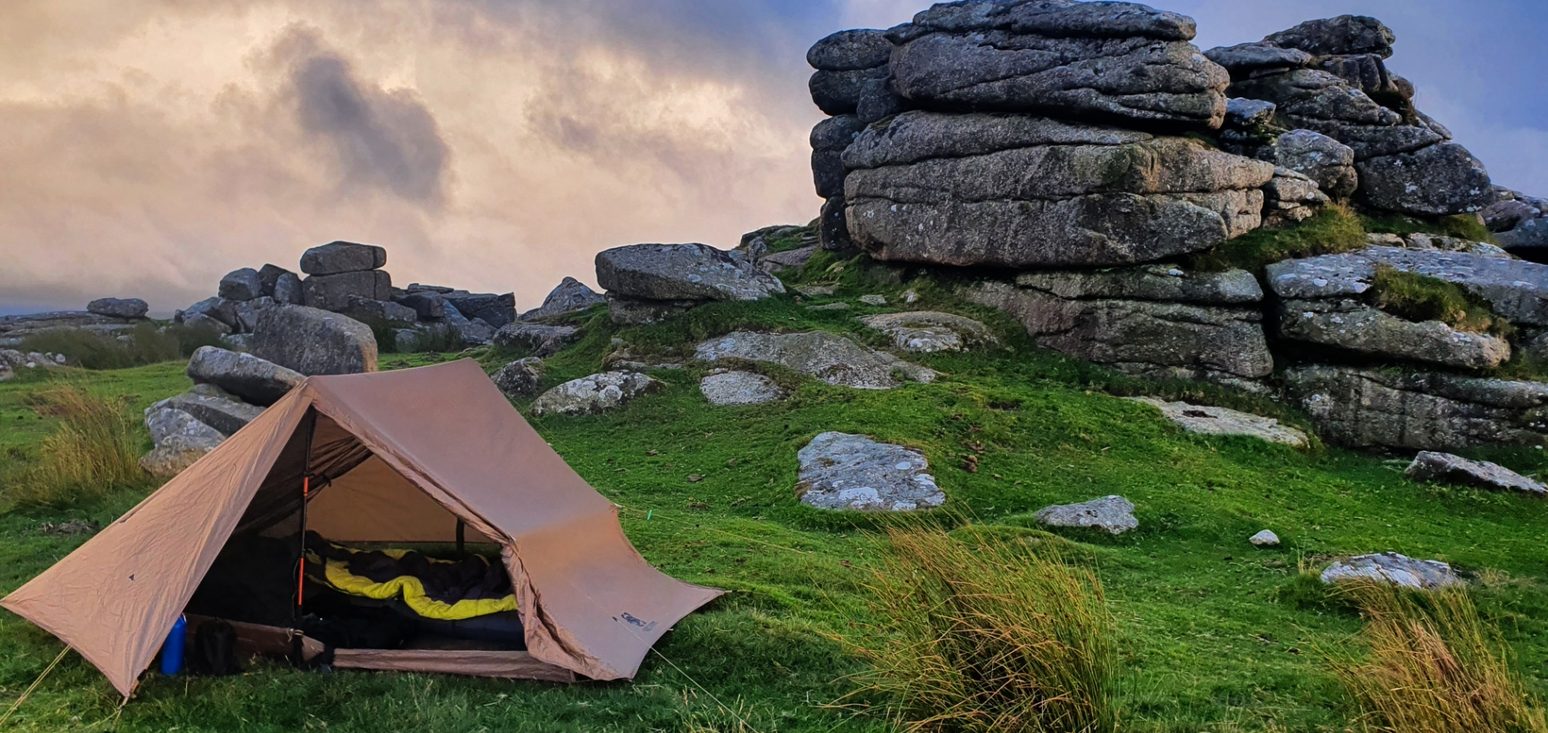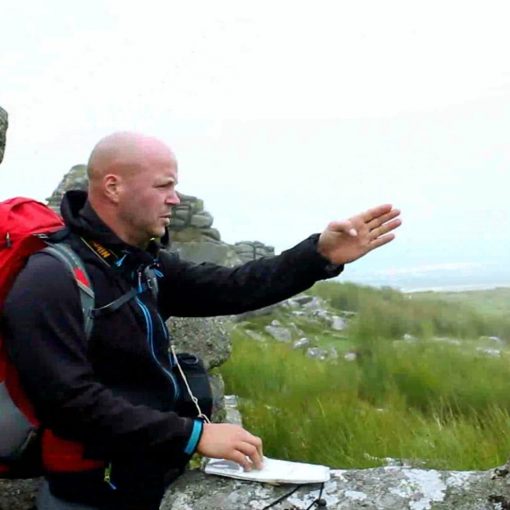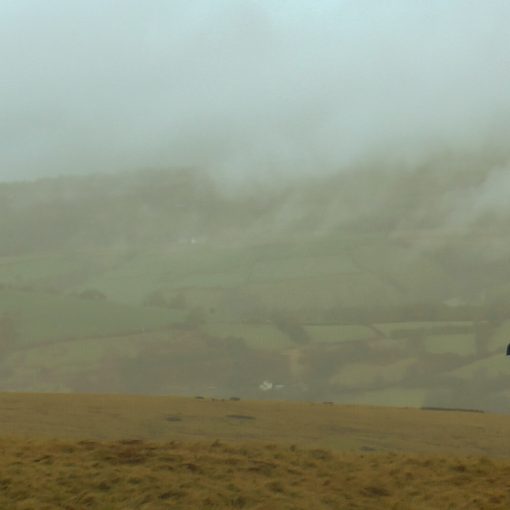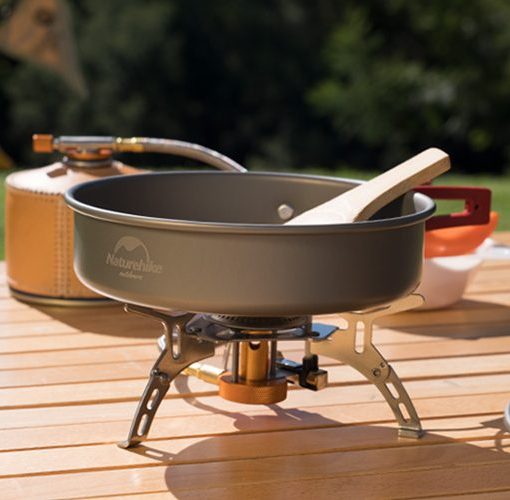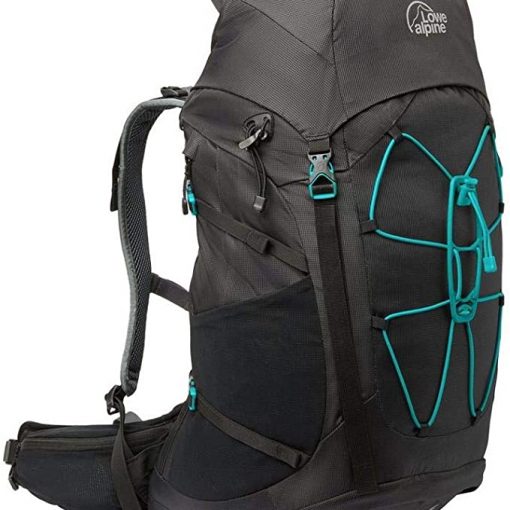Everything you need to know about UK Wild Camping (Almost)!

Is Wild camping dangerous? Is wild camping illegal? What shelter should I use? And what do I need to take with me?
Do I need to spend a fortune ? How do you choose your location? And how do I go to the toilet whilst wild camping?
These are just a few of the questions I get asked on a regular basis, and so in this blog I will answer those and many others as I give you top ten tips for wild camping in the UK – whether you are a beginner or not, keep reading, as you may learn something you hadn’t considered, or you may have some advice that I have missed. If so then please drop us a comment below.
Wild camping has become really popular in recent years. Its great to know that so many people have taken to the outdoors and are enjoying our countryside. However, with increasing numbers, its now more important than ever to share tips and some of the rules to ensure that we all make the most of this amazing hobby, staying comfortable, safe and responsible.
If this seems like a lot to read-through then you can watch the accompanying video here!
1. HOW TO CHOOSE A WILD CAMPING TENT

There are many various options for wild camping, and although a tent is one of the most popular, there are many other ways to enjoy sleeping in the outdoors.
Tarp and Bivi camping is an adventurous way of enjoying the great outdoors. It can be considerably lightweight, and therefore ideal for anyone who wants to travel light.
Hammock camping is also really great fun but I found that you do end up carrying considerably more gear, and it ties you to one location – literally – and you do have to be near trees. This is no good on the moors.
I must say that I do prefer a tent, you can keep the elements and any creepy crawlies out of your sleeping area. So lets look now at how to decide which tent is best suited to you.
You can spend anything from £50 – £1000 on a tent, but you don’t need to fork out for expensive tents for the majority of UK camping. A lot of the budget tents really hold their own in adverse weather, and sometimes the pricier tents are just as likely to fail.
Things to consider are :-
Are you camping alone?

If camping on your own then a one or two man tent would be preferable.
Two men rarely fit inside a two man tent along with all their kit, but I enjoy a two man tent to myself as it gives me lots of room to lay out my gear.
If you are sharing a tent with a partner, then perhaps a three man tent would be better for you, and perhaps one with a door on either side, too so you can both get in and out without hastling each other too much. You may want to split the tent down when you pack it to share the weight whilst walking, too.
However, I wouldn’t go any bigger than a 3 man tent. What you certainly shouldn’t do is take any larger family tents out wild camping especially on the national parks – there are campsites for that, discretion is the key.
Will you be carrying your tent over long distances?

I would say that lightweight tents are preferable if you want to do a lot of walking, anything between 1-2kg’s seems to be ideal – but you may opt for a heavier tent in the harsher conditions.
You can even get tents that use your hiking poles to put them up instead of poles, which are lighter still, but can be somewhat of a faff to put up.
Are you a fair-weather camper?
Then you won’t need a four season tent. If you are going to go out in all kinds of weather then you may want a tent that the fly sheet goes up first, or better still, one in which the inner and fly sheet attach together. This way the likelihood of getting your inner skin of your tent wet is greatly reduced.
Geodesic dome tents are ideal in the stronger winds, as are tunnel tents. You will get more room in a dome tent, and the design is quite rigid, but the tunnel tents are lower to the ground and can take quite the battering. Tunnel tents tend to have a smaller footprint too which gives you more scope of where you can pitch them.
Its also best to make sure that you know how to pitch your tent before you take it into the mountains. Have a run through in your garden or at a park if you can, because the last thing you want to do is struggle with it in the dark if things haven’t gone to plan.
Here are some links to some of the tents mentioned –
GEODESIC / DOME TENTS

TUNNEL TENTS
TREKKING POLE TENTS
MY FAVOURITE TENTS
2. PACK ONLY WHAT YOU REALLY NEED!

The easiest thing in the world is to over pack your backpack – and that additional weight can not only be a hindrance – it can also be painful and even dangerous.
On our early camps Nath and myself were both carrying in excess of18kgs each, mostly it was excessive food and clothes. The first thing we did when we got home was assess what we took that we didn’t use.
The trick is to take as smaller backpack as you can, that way, you really consider what is going into it, and you only take what you know you can’t really do without.
I have now got my winter camping gear down enough to fit into a 35/45l backpack, a vast improvement from even a year ago.
You can soon become obsessed with cutting out kilo’s, but then you will want to weigh it up to your own personal needs.
Do you shred weight from your pack at the risk of compromising comfort during your camp? Once you have been out once or twice, you will soon come to know where you can save those extra kilo’s.
So what should you pack?

You will need:-
- a decent sleeping system,
- a cook set, mug and spork,
- torch and headlamp,
- a few items of spare clothes,
- water proofs,
- toiletries and a trowel,
- navigational aids,
- a powerbank,
- a first aid kit
- and insect repellent.
Obviously food and drink is important, but you can strategically work out what meals you will need for your trip. We will discuss that in greater depth a little later.
3. KNOW THE WILD CAMPING LAWS
Wild Camping is technically not legal in the majority of the UK, although there are a few places in which it is allowed.
That being said, however, there are many places where it is not technically allowed but is tolerated and permitted as long as you stick to the wild camping rules and practice Leave No Trace.
you are quite within your rights to camp on Dartmoor National Park – but only on common land and in area’s highlighted in the Dartmoor Camping Map. There are also certain by-laws in place that you should follow.

It is also legal to wild camp pretty much anywhere in Scotland, as long as you abide by the Scottish Outdoor Access Code, which lays down some guidelines of how to camp responsibly. However, camping is prohibited in Loch Lomond and the Trussachs National Park due to over use.
In the Lake District wild camping is tolerated, and although it is not legal there are by-laws in-place, such as ensuring you camp on open land and above the highest fell wall!
The other national parks have no by-laws in place that allow wild camping, although they do tolerate responsible camping following similar guidelines mentioned before. So before you go out, it really is important to swat up on the wild camping rules for the area you wish to visit, and to seek permission where ever required.
We will return for a closer look at to how to camp in a while, but first…
4. GET YOURSELF A DECENT SLEEPING SYSTEM
With any aspect of wild camping, you can spend as much or as little as you like, but one area that I feel is worth that additional spend is the sleeping system. Not only do you want to be comfortable during a night in the tent, but more importantly, you want to be warm.
In the start I was either carrying sleeping pads and sleeping bags that were too light and inefficient, or too heavy and cumbersome. I tried every combination over the years, I tried sleeping bags with liners in, which would usually still leave me cold and also increase the discomfort when the liner would move independently in the sleeping bag and I would constantly tangle up throughout the night.
I also used to carry two sleeping pads, one foam pad that would add extra insulation beneath a lightweight budget sleeping pad. Not only was I carrying twice as much as was necessary, but again, the trouble I had in the night wrestling with two sleeping pads which wanted to go in separate directions would always ruin a good nights sleep.
My advice to you is make this the area that you spend a little more on, especially if you are considering winter camping. I have spent out on a decent OEX Down Sleeping Bag with an extreme rating of minus 38 degrees and a comfort rating of minus 9. Its comfortable, warm and packs down really well too.
And my new Thermarest Neo Air sleeping pad packs down to about the size of a tin can, and the comfort and the insulative values have proven their worth in colder weather. OK, it was pricey when compared to what I usually pay, but its an incredible improvement and to be honest if you added up the costs of all the other pads then I probably would have saved money from the off.
5. HOW TO CHOOSE YOUR CAMPING LOCATION

It would be nice to say that before you go out for a wild camp, that you should stake out the area and find your ideal camping spot. However, that’s very rarely possible.
For example, if you are heading out into the mountains or onto the moor for a multi-day hike, chances are that its going to be an area that you may not have seen before.
Or, if you have seen a great spot to camp previously, its likely that when you reach that destination, someone else has already set up in it.
If you do find someone else where you wanted to pitch, then move along, and keep looking. The main experience of wild camping is to feel isolated from society and back to nature. The last thing anyone wants is unwanted company!
Before you go out, have a look over your map at your route for what appear to be good places for a camp. You can generally tell by the terrain, and the contour lines what the land will be like. But don’t be afraid to improvise once you’re at the location.
Once on location and ready to set up the tent, have a look around at the terrain. Ideally you want somewhere level, and dry to pitch up.
You may want to pitch relatively close to a water source so you can fill water bottles, but not too close that if there are flash floods in the night you are likely to get washed away.
If you know the direction of the wind throughout the night, then look for somewhere to pitch that can shelter you from the worst of it, and if there are signs of congregating cattle you may also want to be aware. I have slept a few times in amongst bullocks and ponies, which although nothing actually came from it, it was an unnerving night wondering if they were going to trample my tent.
6. HOW TO STAY SAFE

Your safety is an important aspect of camping, and there are a few ways to prepare for a safe trip.
Have an idea of your route before you set out, and possible camping locations, so you are prepared as much as you can be beforehand.
Let someone know of your plans, so that if something does happen and you get stranded, someone else will be able to point rescue services in the right direction.
Research the terrain that you are going to be exploring, and find out its typical conditions for the specific dates that you are visiting. Some places are more inhospitable during wet seasons, and some locations, such as Dartmoor, have areas used by the military, so you should research firing times. If you are in any military zones, its also advised that if you found any shrapnel, that you leave it where it is.
Always make sure that your phone has some battery left in case of emergency. If you don’t have a power bank and are running out of battery, then reserve it. Switch it off and save it.
Also, don’t take any unnecessary risks. Know who you are contacting in an emergency, dial 999 and request the police, then mountain rescue in your area. Its also worth pointing out that you can text 999 if signal is disrupted.
As mentioned previously, its best to carry a map, compass and have some idea of how to use it. If possible a GPS or navigational app with you to help find your way or to let anyone know your whereabouts. You can use an app called OS LOCATE to recover your location as a grid reference or…
There is also an app now that is increasingly recognised called what3words which will translate your location into three words which when relayed to the emergency services will pinpoint your location. However, this is still in its infancy, and some suggest that variations of spelling certain words could possibly hinder a rescue.
7. KEEP AN EYE ON THE WEATHER

The weather is always temperamental, and never more so than in the hills and mountains. You are higher up, exposed it, changeable weather can catch you out without much notice, but its also more extreme up there, stronger winds, heavier rain or snow, lower temperatures and with a greater risk of lightning strike.
So its really important that you keep an eye on the weather leading up to you camping trip, and during.
Don’t be afraid to change your plans or even postpone your trip if the weather looks too bad or unpredictable. The last thing mountain rescue want to be doing is traipsing out into the hills in dangerous conditions, risking their lives to save yours, when it could have and should have been avoided in the first place.
Of course, you may have checked before you left and the weather was fine, but once you are out the forecast changes and weather warnings are issued. So keep an eye on it wherever you can, and adjust your plans accordingly.
There are numerous ways of checking the weather, the met office seem to be quite reliable (well, as anyone can be), they are certainly in depth, the BBC weather app is easy to read, and then there are other weather apps like Windy too.
8. BE CONSIDERATE

There is a certain etiquette with wild camping, its what differentiates us from the rabble fly campers who created much mess and chaos during the pandemic. If you do it properly and responsibly, you will help to maintain the reputation of wild camping.
Its best that if you do wild camp anywhere, that you:
– arrive late and leave early
– do not camp for more than one night, and preferably in small groups and small tents. The national parks are not camp sites, and should never be used as such! Once again, larger tents and groups are not permitted.
Discretion is the key and most of it is just common decency, like the Leave No Trace rule – and I am sure I am singing to the choir here, but we have all witnessed the aftermath of some people with complete disregard for the beauty spots. Litter, discarded tents, firepits dug into the ground, trees and branches ripped down. Always take bags with you to take your litter away with you.
Actually, as much as we all like a good camp fire, most places exercise the no open fires policy. This is especially true for prolonged dry spells, and in woodlands and forests, but also places like Dartmoor which is very peaty are not exempt from spreading rapidly. In fact, Daartmoor caught alight in the middle of a wet February a few years back.
So, be sure to use a camping stove to cook your meals. Which incidentally leads nicely onto number 9.
9. PACKING FOOD AND WATER

If you want to limit the weight in your pack, then you need to keep track of your meals and snacks.
You want to know how long you are likely to be out and how many meals you will need in that time, including breakfast, lunch, dinner and possibly supper.
Dehydrated meals are extremely light, with high calorific value and they don’t use as much gas as a boil in the bag meal. They can be quite expensive though but you’ll be surprised how some of these brands are really tasty.
As a cheaper alternative, shop bought noodles and packet rice are great to pack in your bag, but the energy produced in these meals may not be up to scratch for wild camping trips involving considerable distances.
You can always prepare your own meals, too, as I do, which I take in foil pouches that I can heat through in the stove, or you can get yourself a dehydrator and have a go at making your own meals. Here’s a Link to my video on the subject!
Of course, for some of you, cooking elaborate meals on the trangia stove is part of the fun, and if you want to compromise the weight in your backpack for the numerous ingredients then that’s up to you. As always there is no right and wrong.
Snacks can be a great addition too.
Biltong and jerky is a great source of protein, plus as well as being really tasty its light and full of energy!
One of my favourites is a fruit and nut mix which again is light and create sufficient amounts of energy for walking. I also like to add chocolate raisins into the mix just to give it a little sweetness.
And then another favourite snack of mine is flapjacks, or any oats bars for that matter. But I have perfected a high energy hiking flapjack which is a great treat out on the trail.

For most of the above meals, and for hot drinks you will need plenty of water, but as we all know, a litre of water is a kilogram in weight. So most of us carry some form of water filtration systems.
I use the Sawyer Mini and the Katadyn Befree
Filtering water is an essential part of wild camping, and so its best to know how to do it properly and safely.
Always make sure that you collect your water from a running water, unless its a larger body of water like a lake or tarn. Puddles and holes are best avoided. When you do collect water, always try to get as close to the source as you can, but if you can’t then at least check up stream for a considerable distance to make sure that there are no dead animals or any other sources of contamination.
If you’re like me, and a little wary of filtering water, then you can always take some additional purification tablets to add to your filtered water, or try to keep a bottle of fresh water for drinking water and use the filtered water for boiling where possible.
You will probably want to take a hot drink too. Coffee sachet’s go down well, 3 in 1 coffees which you just add water, but I have grown accustomed to coffee bags, which I find are absolutely awesome, a lightweight coffee which is as close to the real thing as you can get without taking a peculator with you. I do pack a small tub of coffee mate mixed with sugar to go with it though.
10. HOW TO POO WHEN WILD CAMPING?
Going to the toilet out on the hill is the point that often gets overlooked, but it is important none the less. There is a preferred method that is both tidy, and helps to keep the area clean.
Find a secluded spot, away from footpaths and busy areas. You also want to make sure that you are a good distance away from any fresh water sources so you don’t contaminate that too.
Then, with a small trowel you cut a small deep trench (about 15cms deep is ideal) which you lift out in one piece like turf. Once you have done your business into the trench, you can add any toilet paper you have used to the hole, and replace the turf.
Some argue that the toilet paper should be removed from site, and suggest taking some zip lock bags to stash it in. That is up to you, and I would certainly agree with that when using wet wipes or any sanitary towels etc, but to be perfectly honest, tissue paper is so thin and biodegradable that if buried properly will soon disintegrate and get devoured by insects.
Another suggestion is to burn the paper before you fill in the hole, although this does in fact go against the no open fires policy that many parks have.
So there you have it. My top 10 Wild camping tips for beginners. If you have any tips that I may have missed, or any feedback to any of my suggestions then please leave them below, but in the meantime, good luck out there, stay safe and more importantly ENJOY!


